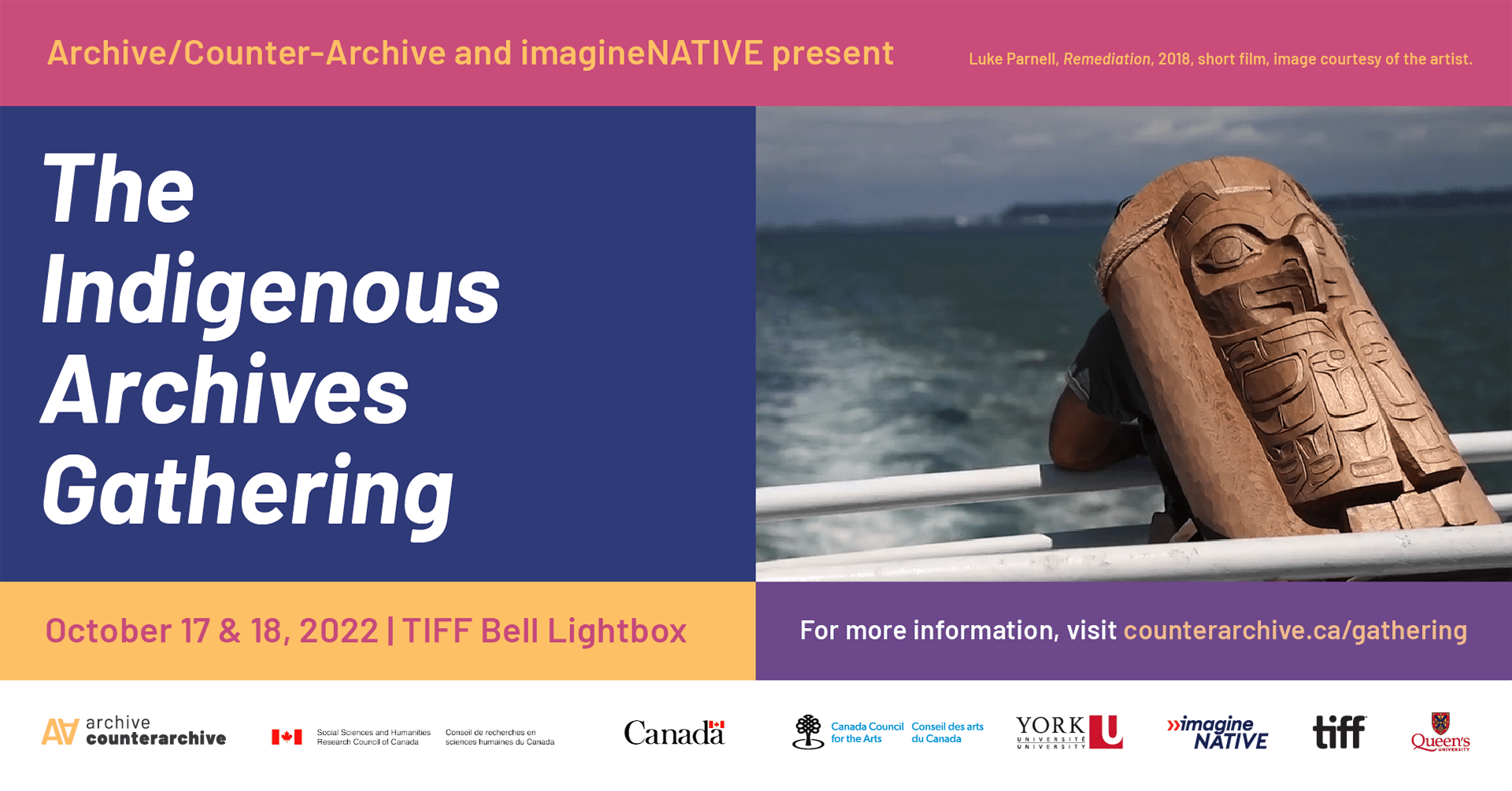On October 17th and 18th, Archive/Counter-Archive and the imagineNATIVE Film + Media Arts Festival collaborate to present the Indigenous Archives Gathering at the TIFF Lightbox. The Gathering will bring together Indigenous artists, film and media specialists, archivists, curators, Knowledge Keepers, Elders, memory workers, and scholars from across Canada.
“The Gathering is focused not only on Indigenous related materials, but also Indigenous experiences as individuals involved with archives, film, and media,” says Stacy Allison-Cassin, a citizen of the Métis Nation of Ontario and assistant professor at Dalhousie University in Nova Scotia. At York, Allison-Cassin filled several roles in the library, including Associate Librarian until November 2020, and holds a PhD in humanities from York.
Jennifer Dysart adds that, “The Archives Gathering provides a forum where I’ll be able to talk with others involved in archives, share the material in its entirety with interested people, and really get into the overall issues that we face as Indigenous researchers working in archives.”
Dysart is an archive enthusiast with a deep love of found footage and experimental filmmaking. Her film projects interrupt the colonial power of archives and represent a growing body of work that prioritizes a return home of archival materials to Indigenous communities. She was born in Alberta, raised in BC, currently lives in Hamilton, Ontario, and has Cree roots on her father’s side from South Indian Lake in northern Manitoba, Canada. In 2014, Dysart won the MFA thesis prize at York for her graduate work which includes Kewekapawetan: Return After the Flood.
“Most archives are colonial by design and as a result, Indigenous people can’t find materials related to their communities because the place names and people’s names in recordings or images were not recorded by the collector and/or by the archive itself. Which means, without intense collections research, the materials become ‘lost’ in the collection because they can’t be searched for and ‘found’,” says Dysart.
Dysart explains that, “a good portion of what I do is ‘re-find’ materials, by trying to ‘crack the code’ of the search terms that the collector might have used to document the material. It’s a long process, sometimes successful and sometimes not. Where possible, I try to return it home to where it came from. I’ve been able to source film from the many large institutions and return it back to my Dad’s home community of South Indian Lake Manitoba/O’Pipon Na Piwin Cree Nation.”
“This was a powerful and meaningful experience not just for us now, but will have an impact on future generations because the archival material shows Elders speaking out against the injustice that was inflicted on them when the government of Manitoba initiated a large scale hydro-electric project and destroyed the environment beginning in the 1960’s and continues to this day. These Elder recordings are just priceless and have such a strengthening impact on the community,” adds Dysart.
It is highly encouraged for York students and faculty alike to attend this event and to broaden their perspective and knowledge about the various important issues impacting Indigenous communities.
Allison-Cassin says that, “York students will get a sense of the vital and active area of Indigenous archives by attending this event. In addition, they will hear about important issues related to how we handle cultural materials, the kinds of activities taking place in different settings, and hear some amazing speakers talk about the work they are engaged in.”
“Students can also hear about vital areas of concern for Indigenous peoples— especially as it relates to cultural materials, memory, and the balance (or lack of balance) between community-led initiatives and centres versus archives and collections at large,” adds Allison-Cassin.
To learn more about this event or to purchase tickets, click here.


